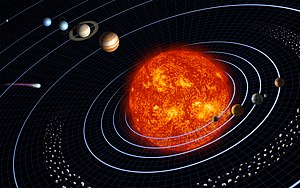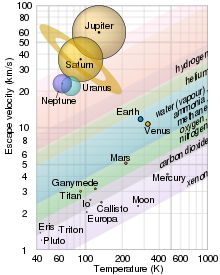
Back غلاف جوي خارج الأرض Arabic Atmosphère extraterrestre French Ekstraterrestrisk atmosfære NB Atmosfera extraterrestre Portuguese Atmosfeer (Planeetn) VLS


The study of extraterrestrial atmospheres is an active field of research,[1] both as an aspect of astronomy and to gain insight into Earth's atmosphere.[2] In addition to Earth, many of the other astronomical objects in the Solar System have atmospheres. These include all the giant planets, as well as Mars, Venus and Titan. Several moons and other bodies also have atmospheres, as do comets and the Sun. There is evidence that extrasolar planets can have an atmosphere. Comparisons of these atmospheres to one another and to Earth's atmosphere broaden our basic understanding of atmospheric processes such as the greenhouse effect, aerosol and cloud physics, and atmospheric chemistry and dynamics.
In September 2022, astronomers were reported to have formed a new group, called "Categorizing Atmospheric Technosignatures" (CATS), to list the results of exoplanet atmosphere studies for biosignatures, technosignatures and related.[3]
- ^ "Department of Atmospheric Science, University of Washington". Retrieved 2007-05-24.
- ^ "NASA GISS: Research in Planetary Atmospheres". Archived from the original on 2007-05-16. Retrieved 2007-05-24.
- ^ Gertner, Jon (15 September 2022). "The Search for Intelligent Life Is About to Get a Lot More Interesting - There are an estimated 100 billion galaxies in the universe, home to an unimaginable abundance of planets. And now there are new ways to spot signs of life on them". The New York Times. Retrieved 15 September 2022.
© MMXXIII Rich X Search. We shall prevail. All rights reserved. Rich X Search